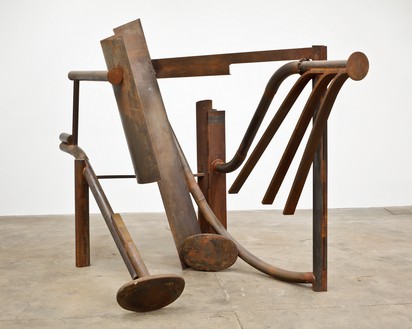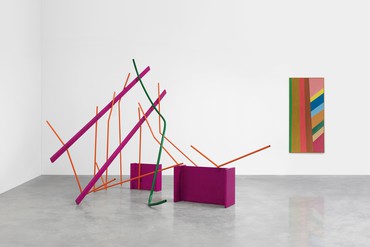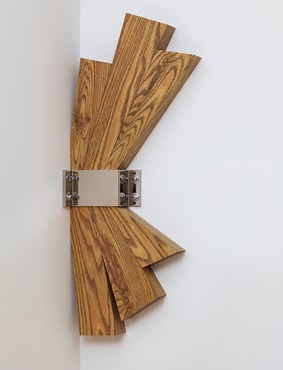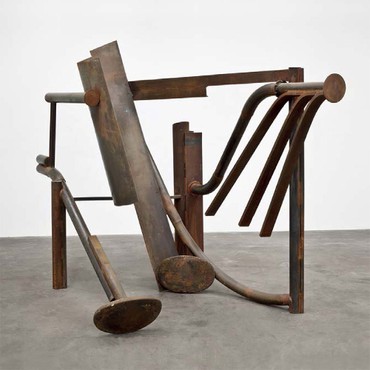About
Sir Anthony Caro (1924–2013) played a pivotal role in the development of twentieth-century sculpture. In the early 1960s, he began making brightly painted, abstract steel structures that he positioned directly on the floor, the omission of a pedestal marking a radical shift in the dynamic between work and viewer. In addition to steel, he also produced works in bronze, lead, silver, stoneware, and wood, as well as on paper. Caro’s constant reinvention of the language of abstract sculpture, as well as his influential teaching at St. Martin’s School of Art in London, distinguished him as the successor to artists such as Henry Moore and David Smith, and as an innovative artist in his own right. Resolutely nonfigurative, his sculptures nevertheless operate as analogues for human experience. As art historian Rosalind Krauss has observed, “Caro rendered the human form not as it looked from the outside, but how it felt from the inside, with its relationships subjectively conditioned.”
Born in New Malden, England, Caro studied engineering at Christ’s College, Cambridge, before training as a sculptor at the Royal Academy Schools, London. From 1951 to 1953, he worked as an assistant to Henry Moore. His early works, which explored the expressive possibilities of modernist figuration, were modeled in clay and cast in bronze. His first solo exhibition was held at Milan’s Galleria del Naviglio in 1956, followed the next year by an exhibition at Gimpel Fils, his first in London.
In 1959, a grant from the Ford Foundation enabled Caro to visit the United States. There, he met vanguard American artists including painters Helen Frankenthaler, Robert Motherwell, and Kenneth Noland, and sculptor David Smith, whose works in welded steel offered Caro a new understanding of sculptural possibilities. Upon returning to London, Caro made a decisive shift in his practice as he began to weld and bolt together steel beams, plates, rods, and tubes into compositions that present no fixed or singular focus of attention. He departed further from sculptural convention by painting these works in bold, flat colors.
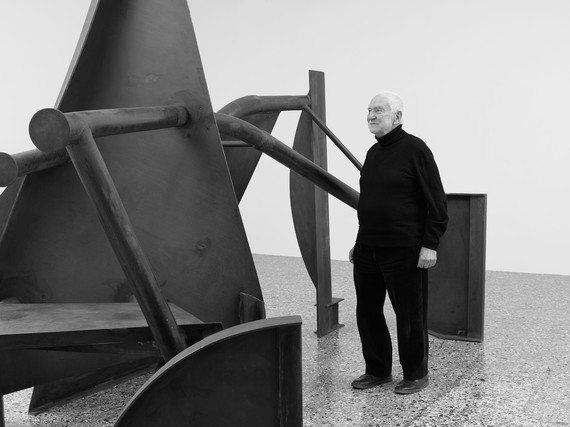
Photo: Mike Bruce
#AnthonyCaro
Exhibitions
Fairs, Events & Announcements
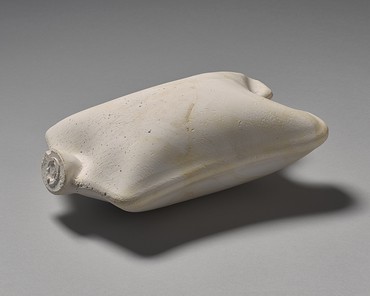
Art Fair
Frieze Masters 2021
October 13–17, 2021, booth C02
Regent’s Park, London
www.frieze.com
Gagosian is pleased to participate in Frieze Masters 2021 with Material Process. Conceived, carved, cast, or constructed—sculpture remained a continuously strong tradition throughout the twentieth century in Britain. Artists such as Henry Moore, Anthony Caro, Michael Craig-Martin, Rachel Whiteread, Damien Hirst, and Douglas Gordon have extended this lineage, often focusing on human figures or body parts, transforming materials and techniques, including language, into a widely diverse practice that is internationally recognized.
Rachel Whiteread, Untitled (Plaster Torso), 1993 © Rachel Whiteread. Photo: Prudence Cuming Associates
Museum Exhibitions

Closed
Anthony Caro
The Inspiration of Architecture
March 9–September 10, 2023
Pitzhanger Manor & Gallery, London
www.pitzhanger.org.uk
The Inspiration of Architecture focuses on the resurgence and development of architectural themes within Anthony Caro’s work, comprising sixteen key pieces created between 1983–2013. The sculptures explore contained space and its relation to the human figure, architectural features, the use of specific materials, and the relationship between exterior and interior.
Installation view, Anthony Caro: The Inspiration of Architecture, Pitzhanger Manor & Gallery, London, March 9–September 10, 2023. Artwork © Barford Sculptures Limited. Photo: courtesty Pitzhanger Manor & Gallery
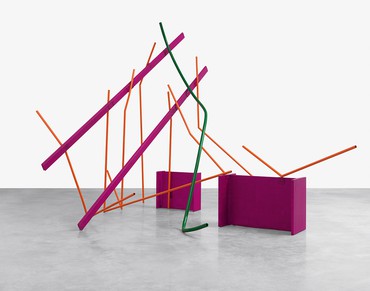
Closed
Anthony Caro
September 10–December 17, 2017
Thomas Schütte Foundation, Neuss/Holzheim, Germany
thomas-schuette-stiftung.de
This exhibition presents a number of important large sculptures ranging from those made in the 1960s, including Month of May (1963), to one of Caro’s last sculptures, The Eye Knows (2013), as well as early Table Pieces.
Anthony Caro, Month of May, 1963 © Barford Sculptures Limited
